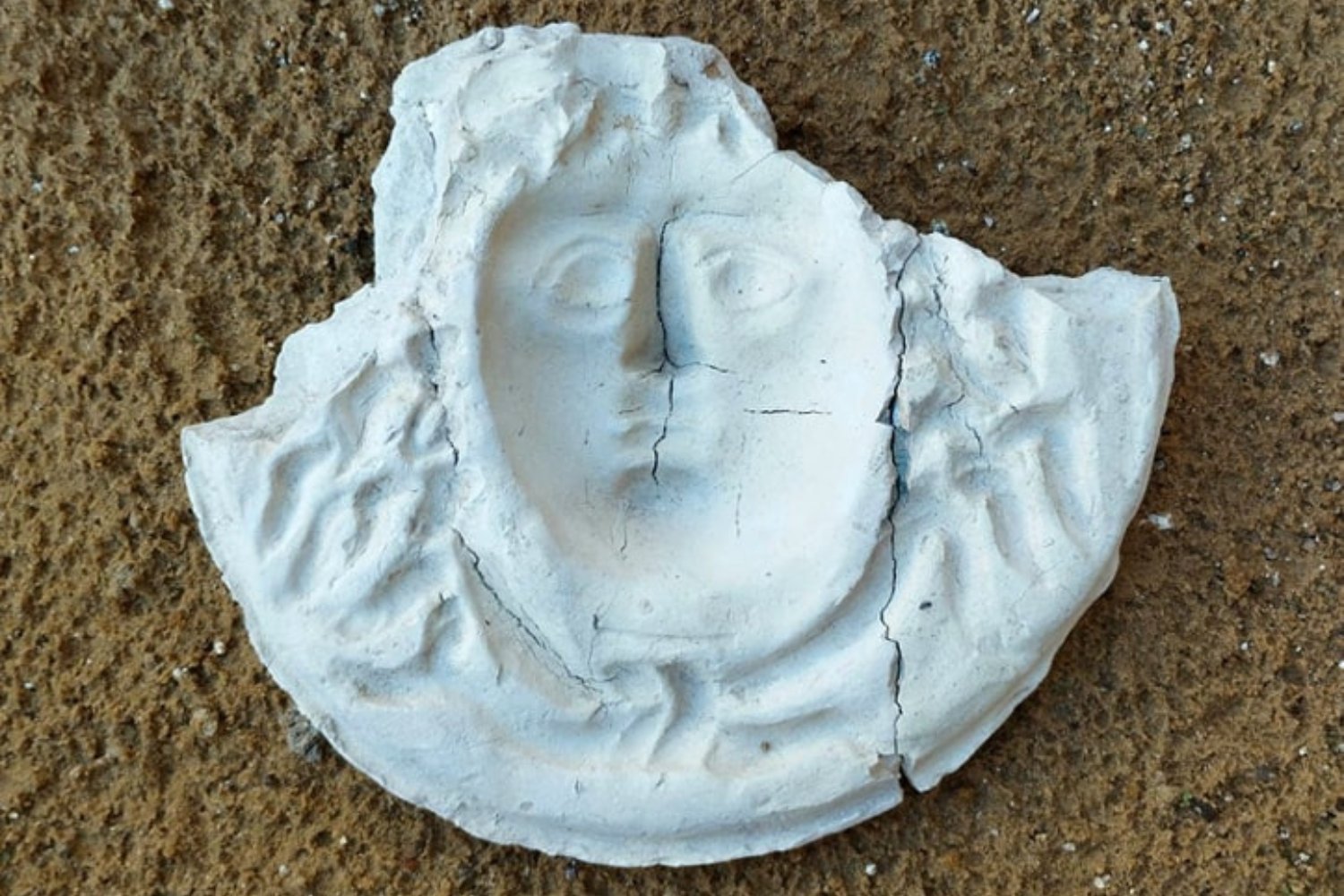A familiar face has resurfaced from the ruins of an ancient Greek city in Italy.
Archaeologists in Sicily have discovered what they believe to be an ancient Roman mask mould depicting the iconic Medusa. Under the direction of Roberto Sciarratta from the Valley of the Temples Archaeological Park, they unearthed the mould in a building from the late Republican period (133 to 31 BCE) in the ruins of Finziade, as detailed in a January 23 statement by the Sicilian regional government. The finding sheds light on the intersectionality of spiritual and cultural life in ancient Rome.
It’s not hard to see why the archaeologists immediately thought of the snake-headed woman—the mould depicts a stern face surrounded by what appears to be wild, thick-stranded hair.
“What you see in the photo is a matrix, used in ancient times as a negative impression for making artifacts. By applying material to the cast, it was molded, taking on the shape of the matrix!” reads a Facebook post by the Finziade Project, the research program encompassing the excavations and co-directed by Alessio Toscano Raffa for the Institute of Heritage Science in Catania, a region of Sicily. A matrix is a kind of mould.

According to Greek mythology, Medusa had snakes instead of hair and a (literally) petrifying gaze. Though the ancient sources sometimes disagree on her back story, she was one of three sibling monsters called Gorgons, according to Hesiod’s Theogony. Unfortunately, she’s perhaps best known for her death at the hands of Perseus.
The Greek hero beheaded Medusa and afterwards continued to use the severed head to turn his enemies to stone. As a result, scholars suggest that Medusa’s frequent depictions throughout antiquity—from mosaics to columns to coins—were made to be protective charms.
Designated “House 18,” the building where the archaeologists discovered the 2,000-year-old mould had most likely been converted into a workshop for the production of masks around the beginning of the first century BCE. Archaeologists had previously discovered similar artifacts in comparable contexts, so the recent finding further confirms the importance of mask production to this area.
Finziade, also spelled Phintias, was an ancient Greek colony and city founded in 282 BCE by Finzia (or Phintias), the tyrant ruling over the city of Akragas. Rome conquered it just two decades after its founding, and today it’s located near the modern-day city of Licata in southwestern Sicily.
The masks produced from the mould itself may have been used in decorative, ritual, or theatrical contexts, as reported by The History Blog. As a consequence, the artifact highlights the significant overlap between spirituality and culture in ancient Rome. It also sheds light on the artisanal productions and symbolic culture of ancient Finziade.
No archaeologists were petrified in the excavation of this artifact.




